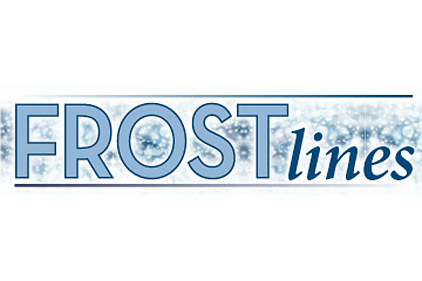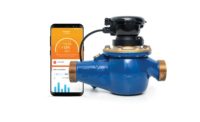EDITOR’S NOTE: The GreenChill Advanced Refrigeration Partnership has been providing the refrigeration sector with information on efforts to reduce refrigerant emissions and improve efficiencies of commercial equipment. In addition to recognizing equipment owners who successfully achieve such measures, the partnership also publishes service-related materials, the following of which can be viewed at www2.epa.gov/sites/production/files/2013-12/documents/gc_preventativemaintenance_20130913.pdf.
Food retail stores can save money and reduce environmental impacts by ensuring that commercial refrigeration equipment is properly maintained. A typical food retail store leaks an estimated 25 percent of refrigerant, or approximately 1,000 pounds, annually. In addition to being costly, leaks have significant impacts on the environment because most refrigerants are greenhouse gases and some are also ozone-depleting substances. This article provides information on the benefits of performing regular maintenance to reduce the likelihood of, and quickly remediate, refrigerant leaks in food retail stores.
Why Preventive Maintenance
Leaks are expensive: Performing regular preventive maintenance saves money because preventing refrigerant leaks is always less expensive than repairing them. The U.S. Environmental Protection Agency (EPA) estimates that if every food retail store in the country reduced its refrigeration system’s leak rate to the GreenChill Partner average, the industry would save approximately $108 million every year on reduced refrigerant costs.
Leaks harm the ozone layer, contribute to climate change or both: Most commercial refrigeration systems in the United States use hydrochlorofluorocarbon (HCFC) or hydrofluorocarbon (HFC) refrigerants. When leaked, HCFC refrigerants contribute to ozone depletion. In addition, these refrigerants are very potent greenhouse gases. While HFC refrigerants do not contribute to ozone depletion, they often have greater impacts on climate change than HCFCs. For reference, emitting one pound of the most commonly used HFC refrigerant has the same climate change effects as emitting nearly 4,000 pounds of carbon dioxide.
Waiting until leaks become a problem before addressing them only makes the problem bigger: Leaks in refrigeration equipment will increase in size if left unaddressed. The larger the size of the leak, the more refrigerant is wasted. Regular preventive maintenance measures help ensure that leaks are caught and addressed while they are still small.
Regular preventive maintenance can help reduce other costs associated with equipment operation:Equipment wear and tear reduces energy efficiency. A system that is low on refrigerant must work harder to control desired food temperatures. In addition, there is a greater chance of compressor burnout when equipment is not regularly inspected. Servicing or replacing poorly maintained equipment is expensive and can result in increased impacts on the environment (e.g., due to refrigerant leaks during system repair). Regularly cleaning and inspecting refrigeration equipment helps reduce wear and tear and ensures energy-efficient operation.
GreenChill Leak Prevention Maintenance Checklist
This checklist identifies several maintenance measures that can help prevent leaks in commercial refrigeration systems.
• Identify and log the refrigerant level of the receiver of each rack. A drop in the receiver level from a previous reading may indicate a leak in the system.
• Visually check the compressor racks, piping, and valves in the mechanical room for any oil seepage. If oil seepage is observed, use soap bubbles or an electronic leak detector to identify any refrigerant leak and pinpoint the exact location.
• Check the control line temperature of all high-pressure switches at a point that is about 12 inches from the compressor connection. If the temperature is above the mechanical room ambient temperature, it may indicate a leak in the control line, fitting, or control bellows.
• Check the pressure relief valves of each system for refrigerant release. Each relief valve should have a balloon, blow-off cap, or other telltale way to signal that a relief valve has discharged.
• Visually check all air-cooled condensers for oil seepage underneath the unit and on finned coil surfaces.
• Check condenser fan blades for cracking or tearing of the metal, especially at the point where the fan blade is riveted to the hub.
• Check for imbalance in the condenser fan blades and wear in the motor mounts/bolts. Excess vibration in the blades can result in motor mount failure. This can cause the spinning motor to drop and tear the tube sheet, resulting in a high-pressure leak.
• Visually check piping and fittings to ensure that there is no pipe chafing and no excessive stress on piping or fittings from thermal or mechanical pipe movement during operation.
• Work with equipment suppliers to verify that equipment is leak-tight when it leaves the factory, and provide feedback to suppliers if leaks are found in factory-built equipment or subsystems.
• If permanent leak detectors are installed, ensure their proper function.
• Using an electronic leak detector at its most sensitive setting:
— Slowly move the probe over all mechanical room components.
— Walk through the sales area of the store and the entire length of the discharge air stream of each refrigerated case.
— Check each walk-in cooler, freezer, and refrigerated prep area in the store.
— Check subsurface refrigeration access pits, starting with riser pits.
— Check accessible overhead refrigeration lines by following the path of the lines.
This checklist is based on a more detailed list of preventive maintenance measures presented in the GreenChill Leak Prevention and Repair Guideline and input from GreenChill partners.
Other Maintenance Measures Can Help Reduce Impacts on the Environment
The next checklist identifies several other maintenance measures that supermarkets can take to help ensure that refrigeration systems are operating efficiently and reduce wear and tear over time. Efficient refrigeration systems help reduce negative impact on the environment by reducing the amount of energy needed to operate. Combining these measures with the leak prevention measures identified above can result in greater environmental and cost-saving benefits overall.
• Clean evaporator and condensing coils regularly to avoid dust and dirt accumulation.
• Clean motor and fan blades with a soft cloth.
• Check the amperage of motors and compressors.
• Review thermostat settings and calibrate if needed.
• Clear away weeds and debris from outdoor condensing units.
• Check motor oil levels in compressors monthly.
• Lubricate motor bearings annually.
• Check relays and contactors quarterly.
• Test controls and safety switches to ensure proper functioning.
• Check refrigerant lines for insulation decay, especially from the condensing unit and the evaporator coils; replace as needed.
• Hire a professional to inspect electrical connections annually.
This checklist is based on a list of preventive maintenance measures developed by GreenChill Partner Kysor/Warren.





Report Abusive Comment